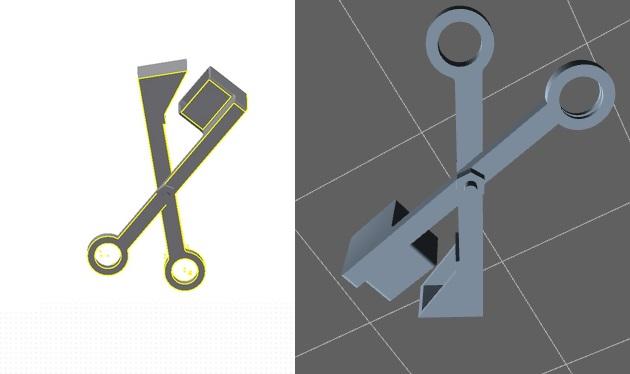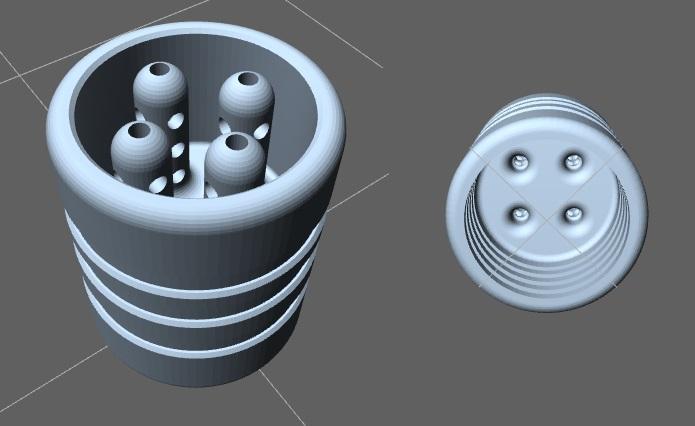Space travel is such a fascinating concept to grasp. Ever since man stepped foot on the moon back in 1969, there has been growing talk of what the next human conquest will be. Many feel as though Mars should be the next endeavor taken on by man, but in order to do so, our technology will need to continue advancing at the same fast pace that we have been seeing.
Thanks to the recent testing of 3D printing in space, as part of experiments taken on by NASA and Made in Space, space travel and exploration may just be about to become quite a bit more feasible. One of the biggest obstacles in preventing us from sending humans much farther than the moon, is the fact that it is almost impossible to stock a space shuttle full with enough supplies, food, and emergency replacement parts to last an entire trip.
A trip to the moon only takes a few days, while traveling to other destinations such as Mars can take a few hundred days. This means that enough supplies must be on board the ship to last the entire trip, plus that of an additional trip, which it would take in order to restock those supplies. With the help of 3D printing though, we could see the need for such a large stock of supplies greatly reduced.
Back in September, we talked about Future Engineers, an organization which is challenging school-aged students to help design the best space tools that can be 3D printed in space to aid in the travel and everyday lives of astronauts.
Students have until December 15th to submit their entries, and the winners will be announced on January 30, 2015. So far there have been quite a few clever designs submitted for the challenge. Below are just a few.
The Food Clamp

Eating in space is not quite as simple as one would think. Gravity plays an important role in the simple actions of feeding ourselves that we take for granted here on Earth. This clamp is designed to help make the self-feeding process a little bit easier. It features an opening (gap) which food can be scooped into and then closed by squeezing the fingers together. This clamp works in a similar fashion to traditional scissors, and when closed will allow for the transfer of food to an astronaut’s mouth. Once in the mouth, it can be opened, dropping food in for eating.
Life Infusion

Another way that astronauts in space will be able to become more self-sufficient is by growing their own food. Whether it be in the form of herbs, vegetables, fruits, or fungi, the ability to grow food in space means a lot less supplies that must be shipped on voyages. “Life Infusion” is a device designed to provide a better way of growing and watering plants in microgravity conditions. It holds one or multiple seeds and provides a method for nourishing these seeds with water and other nutrients. When the seeds germinate and begin to grow, the roots grow into special “nubs” which will hold them in place, providing an anchor for the weightless plants. It can be attached to a pipe which is connected to a water source, thus providing it with all the nutrients the plants will need to grow.
The Claw

One problem experienced in microgravity conditions is that objects just have a tendency to float away. Oftentimes an astronaut looks away for a few seconds and an object has floated beyond his/her grasp. “The Claw” aims to help solve this problem, by providing a small pole which can be fitted with two separate end attachments. The one is a claw-like device, while the other is more of a spoon-looking attachment. Additional poles may be 3D printed to create a longer, farther reaching claw. As a bonus use, The Claw can also function as a backscratcher.
Knork

We all have heard of the Spork, an eating utensil that catches some flack when it comes to speaking of innovative inventions. While the Spork is not the most popular eating tool, the “Knork” might be just what the astronauts need when their meals in space. The Knork is a combination of a knife and a fork, and its design aims to reduce the amount of storage space needed on the International Space Station. Instead of having to ship and store forks and knives, this Knork can just be 3D printed.
Optimus Driver

Every astronaut needs a way to repair their ship. The “Optimus Driver” tool is designed to fit into an astronaut’s hand, keeping in mind their bulky suits and hand coverings. It measures 15 inches long and has the ability to tighten and loosen bolts and screws. It also has a built-in magnet which allows it to pull screws and bolts back to the astronaut. With the current Made in Space 3D printer, magnets cannot be printed, so in order to make this device magnetic, it would require some more traditional technology as well.
These are just a handful of some of the innovative unique creations that students have come up with so far. The winning design will actually be 3D printed on the International Space Station later next year. You can see more of the design submissions here.
What do you think about these designs? Do you have any idea for a 3D printable space design yourself? Discuss in the Future Engineers forum thread on 3DPB.com.
Subscribe to Our Email Newsletter
Stay up-to-date on all the latest news from the 3D printing industry and receive information and offers from third party vendors.
Print Services
Upload your 3D Models and get them printed quickly and efficiently.
You May Also Like
3D Printing News Briefs, June 11, 2025: Sustainability, Automotive Tooling, & More
We’re starting with sustainability news in today’s 3D Printing News Briefs, as EOS has strengthened its commitment on climate responsibility, and Zestep is making 3D printing filament out of eyewear...
3D Printing 50 Polymer Stand-In Parts for Tokamaks at the PPPL & Elytt Energy
Of all the world’s things, a tokamak is one of the hardest, most complex, expensive and exacting ones to make. These fusion energy devices make plasma, and use magnets to...
3D Printing News Briefs, May 17, 2025: Color-Changing Materials, Humanoid Robot, & More
We’re covering research innovations in today’s 3D Printing News Briefs! First, Penn Engineering developed 3D printed materials that change color under stress, and UC Berkeley researchers created an open source,...
Firehawk Aerospace Partners with JuggerBot 3D, Gets $1.25M from AFWERX for 3D Printed Propellants
Texas-based Firehawk Aerospace, an advanced energetic materials firm that works with aerospace and defense applications, announced a strategic partnership with JuggerBot 3D, an Ohio-based large-format 3D printer manufacturer. Together, the...

































